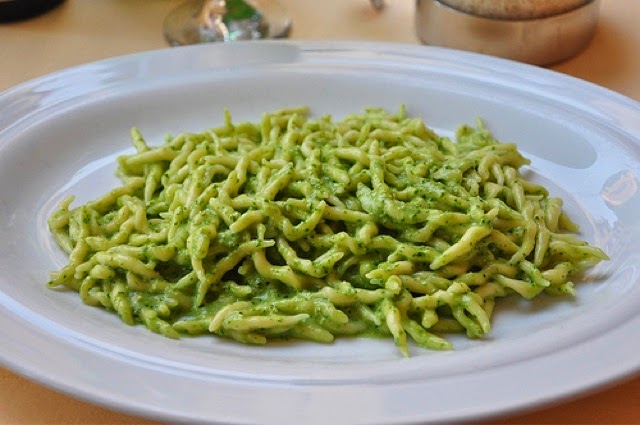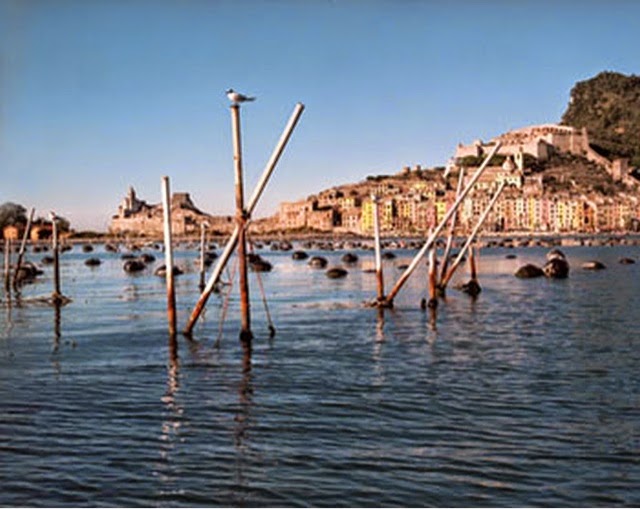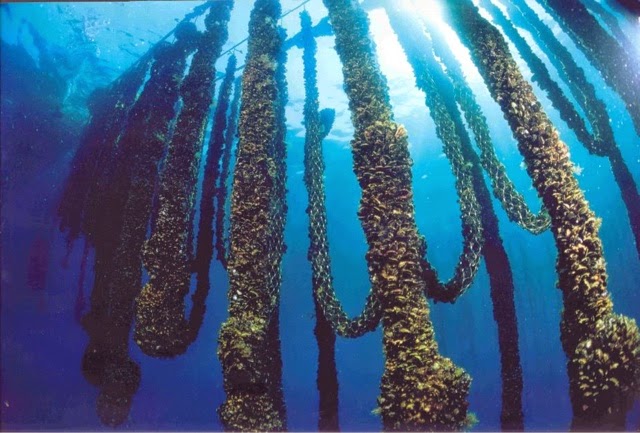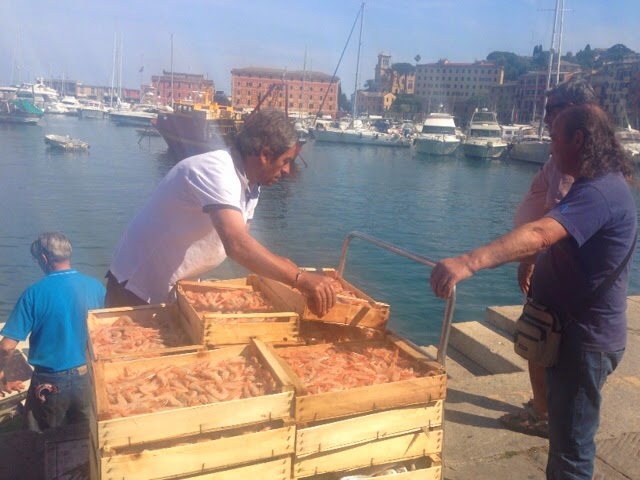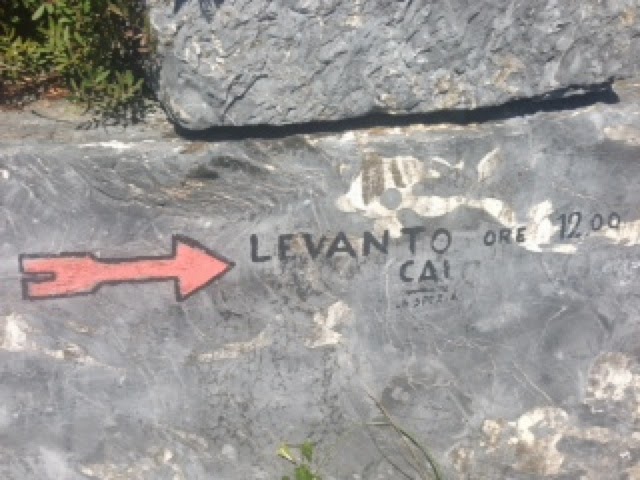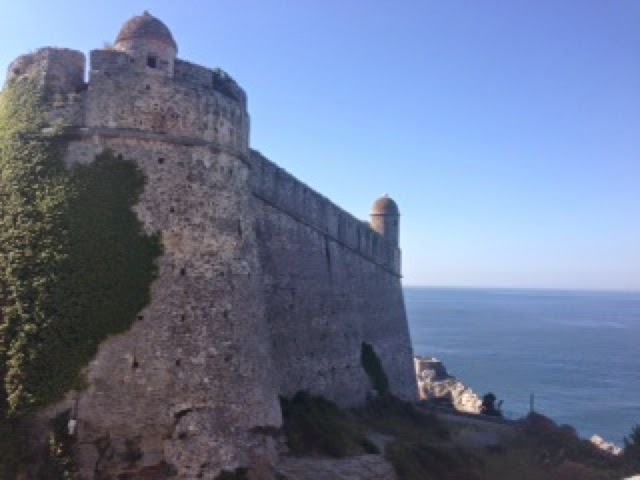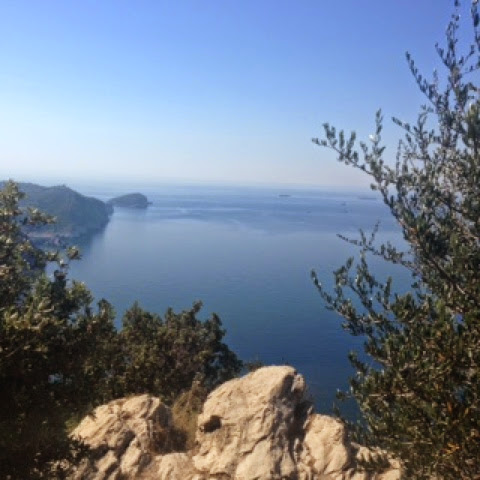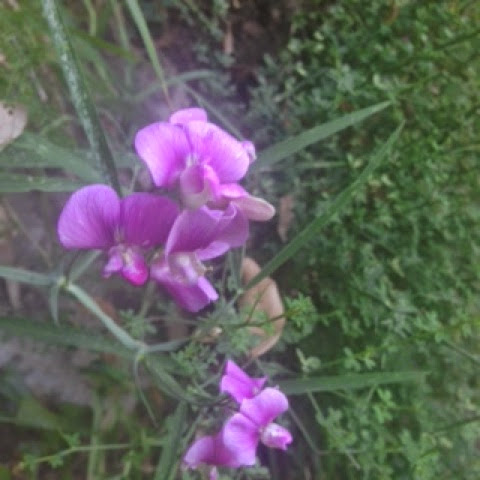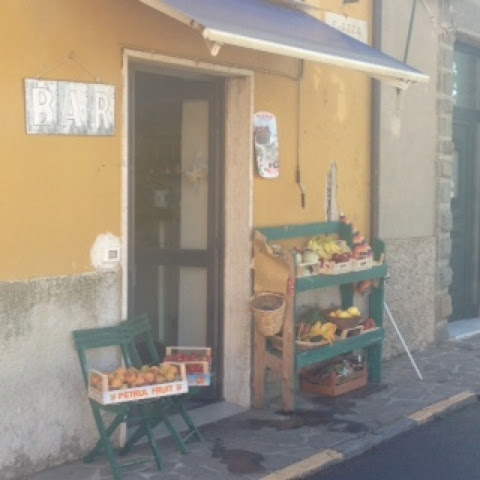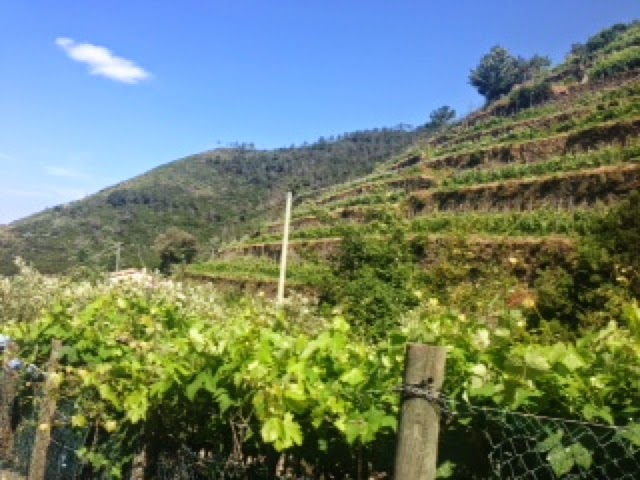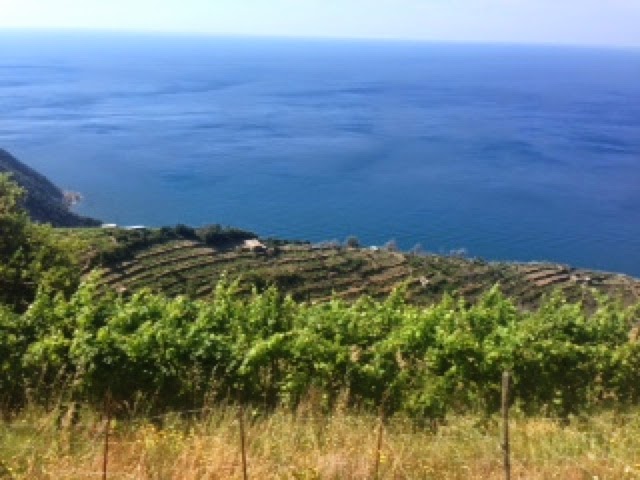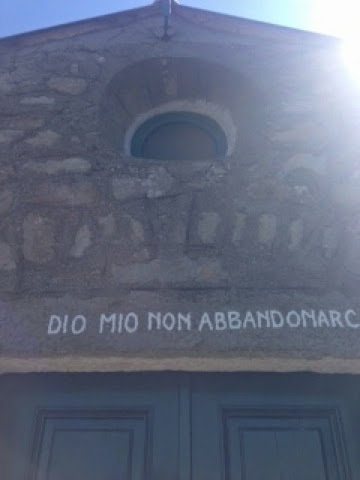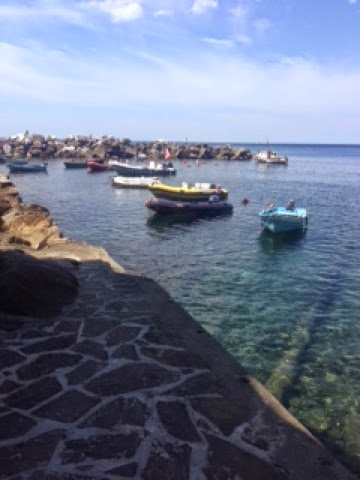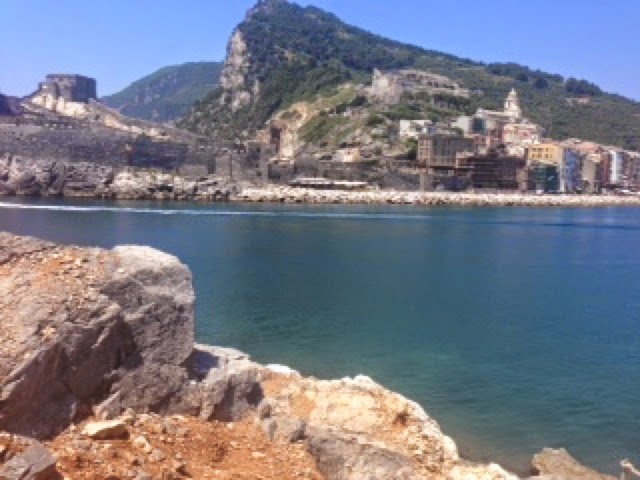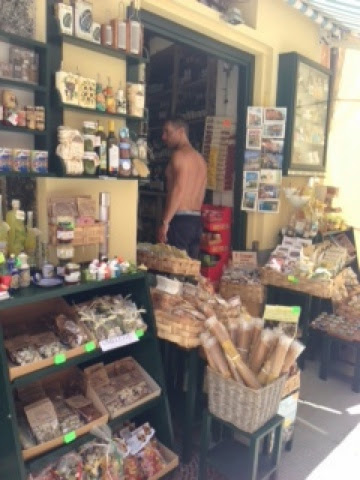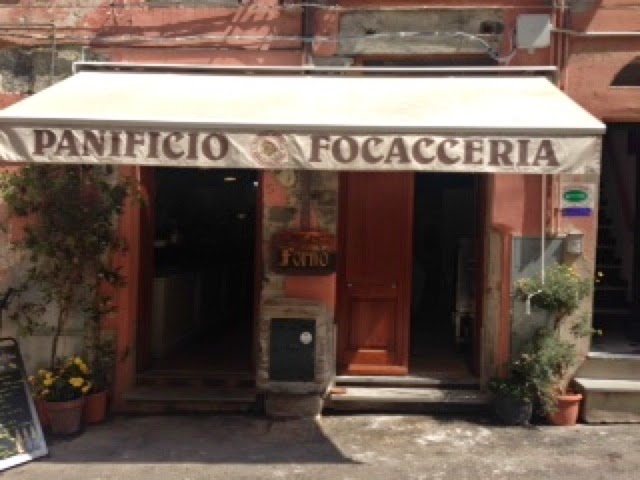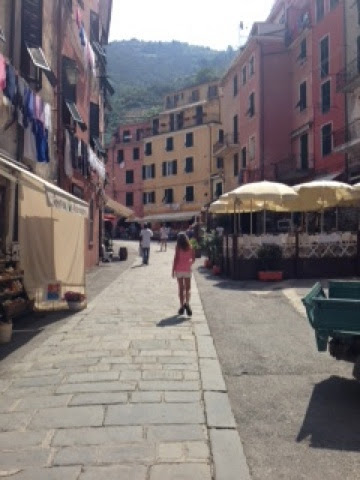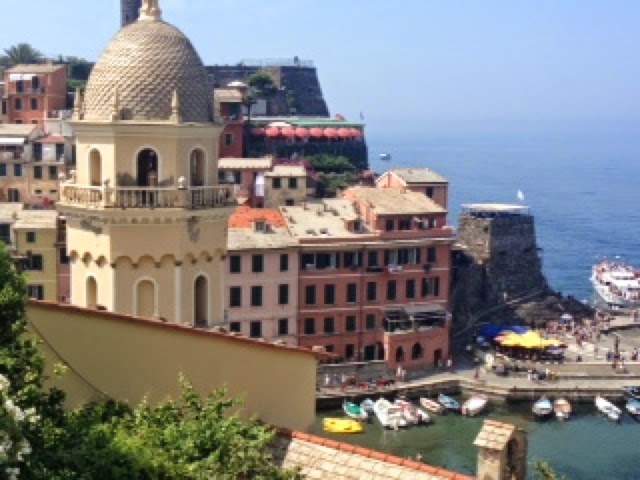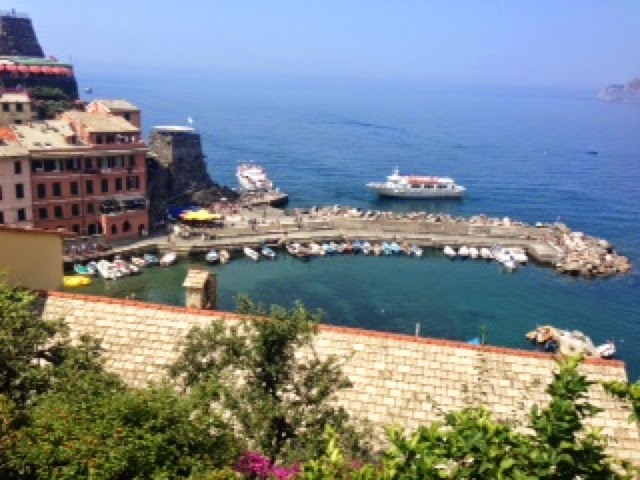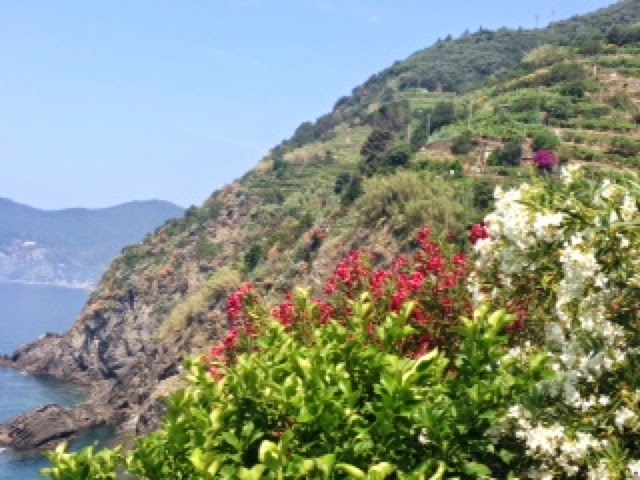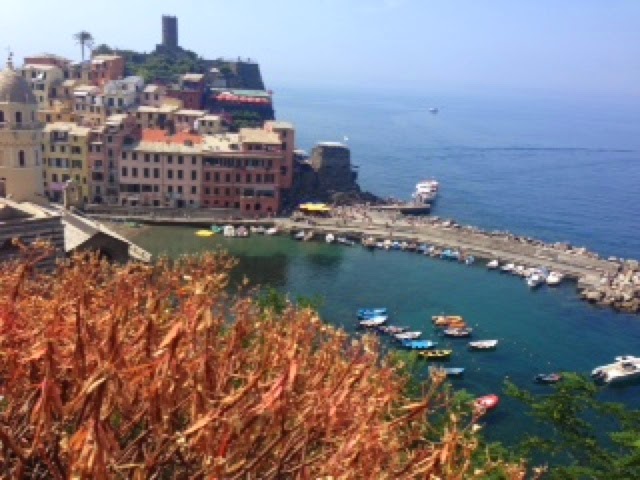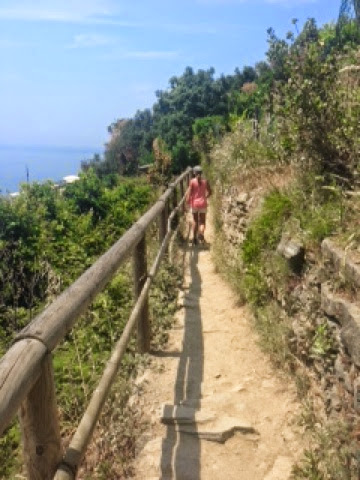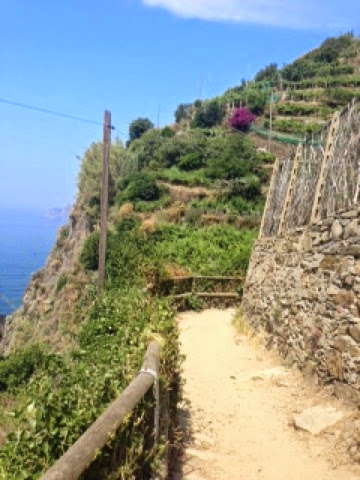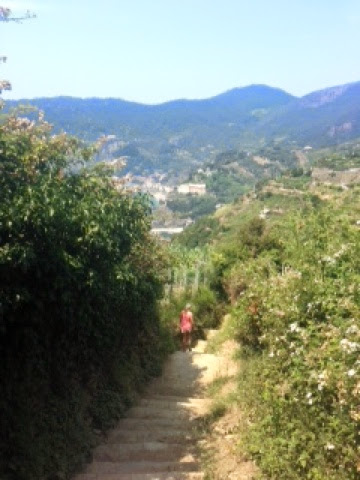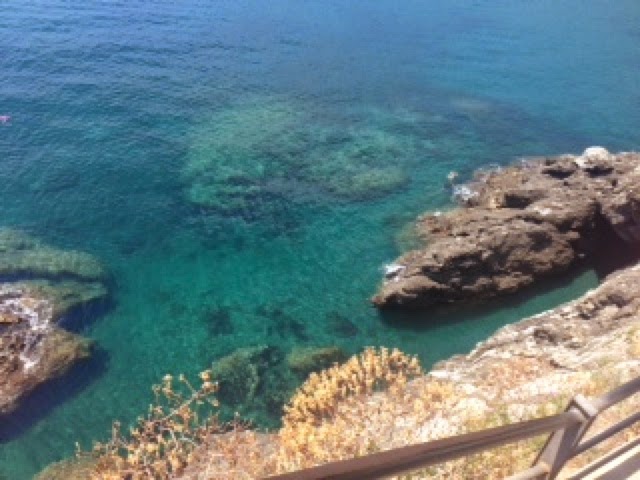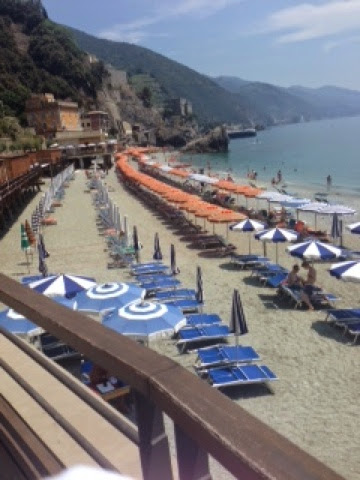Liguria is a narrow, long region hugging the coast from the French border. It's eastern tip touches Tuscany while Piedmont pushes it close to the sea. Its warm climate, calm seas and lush mountains make the cuisine a wonderful collaboration between food sourced from both land and sea. Some of the most unique flavours and gastronomic delights include:
Trofie with pesto
Pesto is a traditional food of Liguria and is made with the freshest of locally grown basil, pine nuts and olive oil with the addition of a touch of garlic and finely grated Parmesan cheese. The warm climate and fertile soil provides ongoing supply of fresh basil. Pine nuts are grown locally in the wild growing pine trees in the mountains above the coast. These ingredients are ground together with locally produced olive oil added.
Trofie (pronounced "troff-ee-eh) is a thin pasta that has been curled around a fine stick and cut short. This pasta is the perfect vehicle for carrying the thick pesto sauce. A small serving in a bowl with fresh basil is the typical Ligurian mode of eating this first course for either lunch or dinner.
Fariniata
Farinata is a thin flat "bread" that is made by mixing chickpea flour (chickpeas are locally grown), water and olive oil and frying in a copper based pan. Often cheeses or anchovies are added for flavour. This now popular street food originated in Genoa but is enjoyed throughout Liguria, some other Italian regions and Coastal France.
Focaccia
Focaccia is a favourite Ligurian food. Flour, water, yeast and plenty of local olive oil is used to make focaccia which is eaten plain as a snack or to accompany meals. Various toppings including Rosemary, fresh tomatoes, olives, onions or pesto are often added making it the local equivalent to pizza.
Muscoli
Muscoli is the name given to mussels, otherwise known as 'cozze' in the rest of Italy. Muscoli are cultivated specifically in the region of La Spezia and Portovenere. They are very similar to standard mussels however, my experience with eating these beautiful sea fruits is that the actual mussels inside the shells are smaller. Traditionally steamed with water, white wine, and a touch of garlic and parsley, they are both sweet and salty, ticking 2 important taste categories. The cultivation of muscoli follows traditional methods which includes harvests in small areas of relatively shallow waters and manual methods of collection using small boats. The muscoli are monitored and cleaned to ensure an absence of bacteria and assurance of sustainability.
Seafood
The Tyrennean Sea, with its calm, warm waters provides an abundance of fish and seafood which are delivered to the shores on a daily basis. In Santa Margherita, the fishermen's catch is hastily stacked into crates twice daily and taken less than 50m to the fish market. A wide variety of white fish, anchovies, red prawns, clams and octopus are hauled in daily and are cooked simply by grilling, baking or frying in the lightest of batter. The busy fish market becomes frantic as customers almost chase the fishermen to their counters. Orders are shouted with plentiful gesturing. Hanging scales are loaded, prices are checked, the catch is wrapped and the cash is exchanged. I made this a happy and smelly routine, conscious of trying lesser known fish varieties as a supporter of the slow fish promotion which encourages choosing smaller fisheries using sustainable methods and consuming a broader variety of fish while avoiding endangered species. To me (pescartarian) nothing is better than eating the freshest of locally caught fish and seafood and sharing it with my hungry family. Of particular note is the 'gambero rosso' or red prawn from Santa Margherita. This relatively small, red prawn is sweet and delicate. A real treat!
Pandolce
One of my favourite Ligurian sweet treats is pandolce. This literally translates as 'sweet bread' and is a combination of a cake, cookie, bread, pastry treat. Ranging in size from large cakes (often eaten at Christmas or Easter time) to bite size, they are loaded with currents, dried fruits and pine nuts. I enjoyed a hearty version in Riomaggiore on the Cinque Terre after a 4 hour hike from Portovenere and it was a wonderful and enjoyable way to refuel.
Liguria has so much more to offer on the culinary front and the broad cuisine is sure to satisfy all tastes. Fresh and simple food that honours both land and sea, preserves tradition and celebrates seasonality allows Liguria to maintain its important and unique culinary status.
